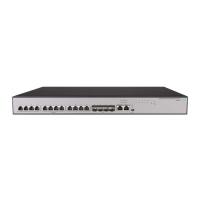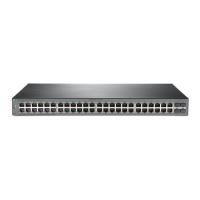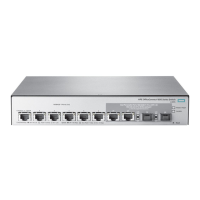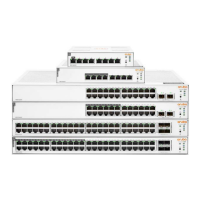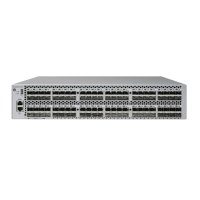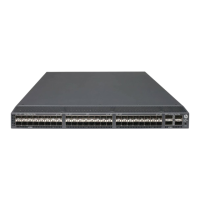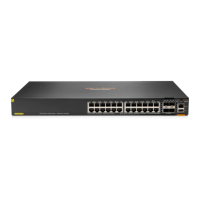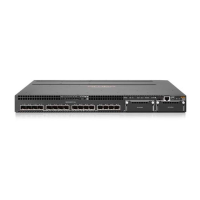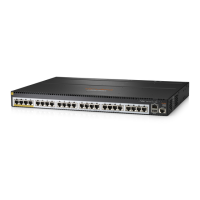23
Identifying physical IRF ports on the member switches
Identify the physical IRF ports on the member switches according to your topology and connection
scheme.
Table 8 shows the physical ports that can be used for IRF connection and the port use restrictions.
Table 8 Physical IRF port requirements
Candidate physical IRF ports
4 fixed SFP+ ports and 12 fixed 1/10GBASE-T
autosensing Ethernet ports on the front panel
All physical ports to be bound to an IRF port must be
the same type.
Planning the cabling scheme
Use twisted pair cables, SFP+ network cables, or SFP+ transceiver modules and fibers to connect
the IRF member switches. If the IRF member switches are far away from one another, choose SFP+
transceiver modules with optical fibers. If the IRF member switches are all in one equipment room,
choose twisted pair cables or SFP+ network cables. For more information about SFP+ network
cables and SFP+ transceiver modules, see "Appendix B Ports and LEDs."
The following subsections describe several recommended IRF connection schemes, and all these
schemes use a ring topology.
Connecting the IRF member switches in one rack
Use SFP+ network cables to connect the IRF member switches (9 switches in this example) in a rack
as shown in Figure 23. The switches in the ring topology (see Figure 24) are in the same order as
connected in the rack.
Figure 23 Connecting the switches in one rack
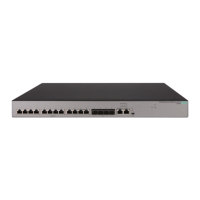
